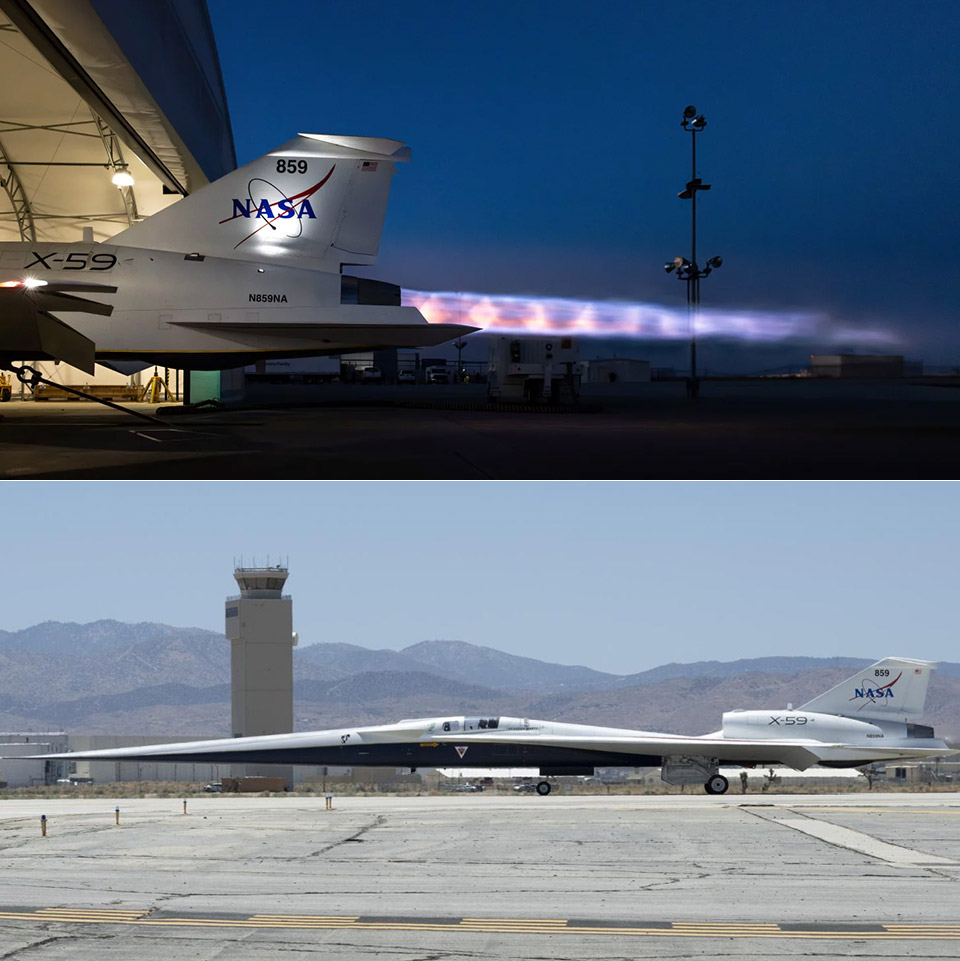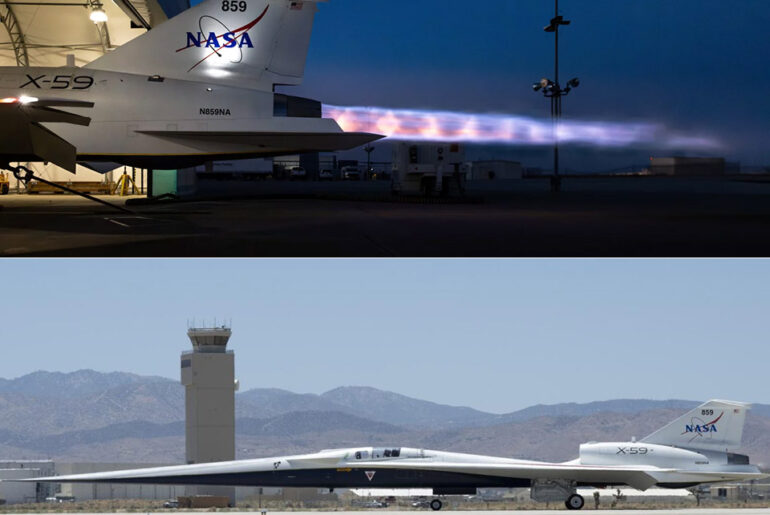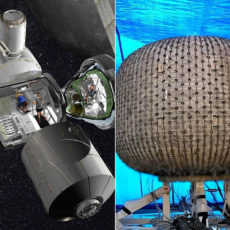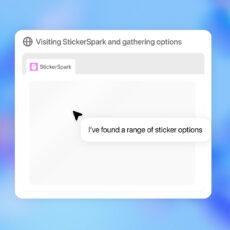
Photo credit: NASA / Carla Thomas
The X-59 rolled out of the Lockheed Martin Skunk Works hangar in Palmdale, California on July 10, 2025 and is now taxiing on its own power for the first time. This is the final step before flight for the NASA Quesst mission aircraft. Central to the Quesst mission is the X-59 which will change the way we think about supersonic travel and potentially open the skies to commercial aviation.
The X-59 is 99.7 feet long with a 29.5 foot wingspan and has a sleek profile. The needle like nose is almost a third of the length and isn’t just for show, it’s designed to break up the shockwaves that form a sonic boom. “The X-59’s shape is designed to prevent the shockwaves from coalescing together,” says Craig Nickol, a NASA engineer on the Quesst mission. “Instead they spread out, with the help of strategically placed aerodynamic surfaces.” This is designed to produce a sound of 75 decibels, like a car door closing from a distance, much quieter than the Concorde’s 108 decibels. Powered by a General Electric F414 engine the plane will cruise at Mach 1.42 or 937 mph at 55,000 feet to test if this gentle “sonic thump” will win over people on the ground.
- Due to platform compatibility issue, the DJI Fly app has been removed from Google Play. DJI Neo must be activated in the DJI Fly App, to ensure a...
- Lightweight and Regulation Friendly - At just 135g, this drone with camera for adults 4K may be even lighter than your phone and does not require FAA...
- Palm Takeoff & Landing, Go Controller-Free [1] - Neo takes off from your hand with just a push of a button. The safe and easy operation of this drone...

Photo credit: NASA / Carla Thomas
The long nose blocks the forward facing cockpit window so NASA created the eXternal Vision System (XVS). High resolution cameras feed a 4K monitor in the cockpit giving the pilots a clear augmented reality view ahead. Testing the X-59 is a careful process. The recent taxi tests started with low speed runs to check steering, braking and handling. Engineers are monitoring everything to make sure all systems are good before moving to high speed taxi runs just short of takeoff.
Scaling the X-59 technology to larger planes is unknown. This single seat experimental aircraft with a 32,300 pound takeoff weight isn’t a passenger jet. “NASA feels confident that technology can be scaled up to a full scale commercial supersonic aircraft but the X-59 is needed to demonstrate that and collect that data,” says Ray Castner, NASA’s propulsion performance lead. The Concorde which carried up to 128 passengers was retired in 2003 due to cost and environmental issues not just noise. The X-59 tackles the sonic boom issue but sidesteps fuel efficiency and emissions – issues future designs will have to address.
The X-59’s next steps are exciting. After taxi tests it will head to NASA’s Armstrong Flight Research Center in Edwards, California for flight tests over restricted ranges to measure the sonic thump. Then comes the public phase, flying over cities to test real world reactions.
[Source]










